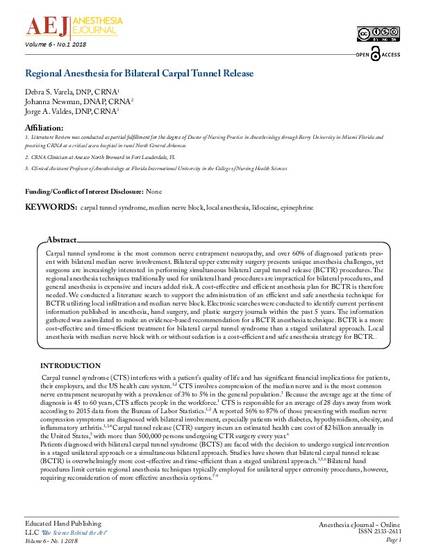
Carpal Tunnel Syndrome is the most common nerve entrapment neuropathy with over 60% of diagnosed patients presenting with bilateral median nerve involvement. Bilateral upper extremity surgery presents unique anesthesia challenges, yet surgeons are increasingly interested in performing simultaneous bilateral carpal tunnel release (BCTR) procedures. Regional anesthesia techniques traditionally employed for unilateral hand procedures are impractical, and general anesthesia is expensive and incurs added risk. A cost effective and efficient anesthesia plan for BCTR is therefore needed. Objective: Conduct a literature search to support the administration of an efficient and safe anesthesia technique for BCTR utilizing local infiltration and median nerve block. Methods: Electronic searches were conducted for current pertinent information published in anesthesia, hand surgery and plastic surgery journals within the past 5 years. Information gathered was assimilated to make an evidence based recommendation for a BCTR anesthesia technique. Results: BCTR is a more cost effective and time efficient treatment for bilateral carpal tunnel syndrome than a staged unilateral approach. Local anesthesia with median nerve block with or without sedation is a cost efficient and safe anesthesia strategy for BCTR.
Available at: http://works.bepress.com/jorge-valdes/8/

Originally Published in Anesthesia